Baby Armalite
Thanks to NirvashTec for helping me source vital material and documents that helped with the build.
Summary
The M4 Carbine, formally Carbine, caliber 5.56mm, M4 is an American carbine designed by Colt's Firearms Manufacturing and manufactured by a variety of firearms manufacturers. Essentially an M16 with a shorter barrel and telescoping buttstock, it has found favor with military, law enforcement, and special forces units worldwide.
While it has not escaped controversies surrounding perceived reliability and stopping power, it nonetheless finds favor with those who depend on them the most. Underneath its modern skin is an old, reliable core.
History
Formally adopted in 1994 and first used in Kosovo as part of the US contribution to the NATO-led KFOR mission, it is the culmination of decades of work starting from the time Armalite sold the rights of the AR-15 to Colt.
The CAR-15
When Colt acquired these rights, they sought to build a family of small arms with the AR-15 as its core. Known as the CAR-15, it included sniper rifles and belt-fed machine guns. However, its "submachine gun" variant would be most associated with the CAR-15 name, and the CAR-15 would come to refer to any M16 carbine before the M4.
The CAR-15 compact carbine would see significant development during the Vietnam War, to include changing the original collapsible stock to a pattern still used today in some form, the handguards from chopped-down M16 handguards to the distinctive round handguards, lengthening the barrel from 10" (254mm) to 11.5" (292mm) and experimenting with various "moderators" to temper the substantial muzzle blast from such a short barrel.
They would see limited use by certain elements of the US Armed Forces, notably by US Army Special Forces as the XM177 submachine gun, and by the Air Force Security Forces as the GAU-5A (not to be confused with the modern GAU-5A ACSW). These compact carbines, distinguished from later carbines as the "Colt Commando," are still used by some police and special forces units. The Mk 18 CQBR is a modern spiritual successor to the concept.
However, it was also found that by lengthening the barrel to 14.5" (368mm), the blast effects were substantially reduced sufficiently that a standard M16A1 flash hider could be used, the ballistic performance was improved, and could mount either the M203 grenade launcher or an M7 or M9 bayonet.
Colt would sell these CAR-15 carbines to various forces alongside the M16 rifle, with users such as the Philippines, Malaysia, Israel, Canada, and even US Special Forces and US Air Force Security Forces. While obsolescent by today's high standards, their rugged nature has allowed them to persist in active use well into the 21st century.
Development and Adoption
In 1982, the US Army requested Colt to make a carbine variant of the M16A2 rifle, and many of the changes found in the M16A2 made it to the M4, such as the faster 1:7 rifling twist rate and heavier barrel forward of the handguards. Known as the XM4, these carbines would be used extensively by US Army Delta Force operators and US Navy SEALS. The success of these carbines led to their formal adoption in 1994.
Proliferation
When originally developed, the M4 was intended for soldiers whose duties are better served with a more compact and less encumbering weapon, such as vehicle crews, light weapons operators, officers and NCOs, and special forces units.
However, the widespread introduction of body armor such as the Interceptor and IOTV, as well as a dramatic increase in urban combat, led to wider distribution of the M4. By 2005, most US Army soldiers in Iraq and Afghanistan were issued the M4. The US Marine Corps would continue to favor the longer M16, but in 2015 would replace the M16 with the M4. In turn, the M4 would be replaced in the infantry squad by the M27 IAR, a variant of the HK 416, itself based on the M4 but using an external short-stroke gas piston.
Around the world, the M4 and variants have found favor with various other nations, both purchases and as part of the Foreign Military Sales program. While some make them standard issue, they are more often than not special forces and law enforcement units. For those who can buy the best money can get, the M4 seems to be the favored purchase.
Upgrades
While the M4 certainly made a favorable impression, there were definite improvements that could be made. These upgrades will mainly discuss the US military’s upgrades, as the number of other upgrades done by other countries are numerous.
M4A1
When the M4 entered service, so did the M4A1. The differences between the two was that the M4A1 was capable of fully automatic fire, while the M4 had a mechanism which limited the fully automatic mode to a three-round burst. This is very similar to the difference between the M16A2 and M16A3; the M16A2 was limited to a three-round burst on automatic fire, while the M16A3 was fully automatic.
The three-round burst mechanism added cost, complexity, and the ratcheting mechanism impaired practical accuracy in semi-automatic fire as it changed the trigger pull weight per shot. In addition, the burst mechanism would continue to cycle even in semi-automatic mode, meaning that the first burst after switching from semi-auto mode may fire either one, two, or three rounds.
While the M4A1 was initially limited to Rangers, Special Forces, and some officers, its use with regular units would gradually increase as M4A1 carbines were purchased in favor of the M4, and existing M4 Carbines were overhauled to the M4A1 standard.
In addition, some M4A1 would receive a heavier barrel under the handguards, to better deal with the increased heat generated by fully automatic fire and the increased pressures of the M855A1 cartridge. A heavier buffer is also used with the heavier barrel to improve reliability in full auto fire with the heavier barrel. Currently, the US Armed Forces makes no distinction between M4A1s with the original “M4” profile and the heavy barrels.
SOPMOD Kit
While US Special Operations were largely happy with the M4A1, they sought a carbine more easily adapted to various missions. As a result, they developed a drop-in kit know as the SOPMOD, or Special Operations Peculiar Modifications.
The first SOPMOD kit, known as the Block 1, saw the addition of a railed handguard manufactured by Knight’s Armament Corporation (KAC), the option for a quick-detach silencer made by KAC, a shortened quick-detachable variant of the M203, the AN/PEQ-2 laser sight, reflex and low-power ACOG scope manufactured by Trijicon, a KAC vertical foregrip, flashlight, and night vision scopes. Many of these options would find its way into standard US military M4A1s.
The second SOPMOD kit, known as the Block 2, would see various improvements. The weapons themselves would receive a new free-float handguard made by Daniel Defense, specifically M4 RIS II using a low-profile gas block without front sight, and the M4 RIS II FSP, which has a cut-out in the rails to accommodate the front sight post. In addition, optics and lasers include more modern offerings such as the EOTech 553 holographic sight, EOTech AN/PEQ-15 infrared laser, the SpecterDR variable-magnification scope, and newer night vision sights.
Given the somewhat freer hand which US Special Operations operators have with customization, various commercially-available accessories can also be found.
Mk 18 CQBR
While the M4 is a fairly compact weapon, a more compact weapon was still desired for close encounters. Known as the Close Quarters Battle Receiver, or CQBR, it turned the M4 into the functional equivalent of a submachine gun that uses more potent 5.56mm rifle ammunition.
The complete rifles are known as the Mk 18. The Mk 18 Mod 0, the first variation, resembles a standard M4 but with a barrel that doesn’t extent much further than the front-sight gas block. The Mk 18 Mod 1 uses a new free-float quad rail handguard manufactured by Daniel Defense, which extends from the receiver to the base of the flash hider. The front sight gas block is replaced by a low-profile gas block, hidden under the new handguards.
Assassination Attempts/Potential Replacements
Since it’s adoption in 1994, the US military has attempted to replace the M4 much as the US military tried to replace the M16 ever since 1967.
OICW and XM8
The first major attempt was the infamous OICW program, a prototype semi-auto air-burst “chemical energy weapon” aka a 20mm grenade launcher, with an underbarrel “kinetic energy weapon” aka a rifle. It and other weapons in the Objective Infantry Combat Weapons program were intended to increase soldier lethality by the mass issue of airburst grenade launchers, with a rifle underneath just in case they get too close. Designed to operate either as a single unit or on their own, the weapon, known as the XM29, ultimately failed due to its weight, cost, complexity, and concerns about the lethality of 20mm airburst shells. Subsequent foreign developments in South Korea and China have not been any more successful.
Meanwhile, the OICW was split into two different programs, the XM25 CDTE and the HK XM8 assault rifle, with the intent on putting them back together once both were figured out. The XM8, in effect a modified G36, succeeded in trials and in some ways was an improvement to the M4 and M16, but was not adopted due to logistical concerns, several problems, politics of procurement, and the slight improvements not seen worth the cost of replacing the AR-15 family of weapons, which weren’t causing many issues.
SCAR program
The second major attempt was by US Special Operations Command, who in 2007 wanted a new family of assault rifles in both 5.56mm NATO and 7.62mm NATO. The end result was the FN SCAR, adopted as the Mk 16 in 5.56mm NATO, and the larger Mk 17 in 7.62mm NATO. The Mk 16 however would be soon dropped from use by SOCOM, as it wasn’t much of an improvement over the M4, if at all, but kept the Mk 17 SCAR as a DMR and sniper rifle.
Individual Carbine
The third major attempt was the US Army’s Individual Carbine competition, where the US Army sought a replacement for the M4 from the variety of commercial offerings, some which were M4 variants. Like the XM8 and Mk 16 SCAR, none of the entries were found to be practically better than the M4.
M27 IAR
The fourth and most successful attempt to replace the M4 in some capacity was the M27 Infantry Automatic Rifle, or IAR. Conceived as an automatic rifle to replace the M249 in the squad automatic weapon role (it remains in use on a company-level, to be distributed to squads when more firepower is needed), in 2017 the decision was made to replace all M4s in infantry squads with the M27. Marine Force Recon and secondline units continue to use the M4.
It has been speculated by some that the M27 IAR was really a cunning move by US Marine Corps procurement to replace the M16 and M4 with the HK 416 by having it replace the M249. Given the selection of the HK 416 over entries better adapted to the LMG role and the requirement for bayonet lugs, this hasn’t been confirmed by anyone but the circumstantial evidence points at such.
Next Generation Squad Weapon
The fifth and latest attempt at the time of writing is the currently ongoing Next Generation Squad Weapon, or NGSW. The NGSW is a fairly wide-scale program to replace the M4 and the M249 SAW as well as various optics currently in use with frontline infantry formations. The aim of this program is to provide extra “overmatch” aka more effective range and power, over other competitors. Because winning at everything else isn't enough.
To achieve this, a new rifle and light machine gun, chambered for a potent 6.8mm caliber round more powerful to 7.62mm NATO is to be developed, and paired with a new scope that will automatically calculate various factors and tell you where to aim. To mitigate recoil, they intend to employ a variety of recoil-reducing systems as well as silencers. The new 6.8mm cartridge are of the entrants’ own design, made with various weight-saving and performance enhancing technologies to deliver superior ballistics, effect on targets, and range compared to 5.56mm NATO and 7.62mm NATO.
While the program seems to be well on its way such that the winner will be fielded by 2025, the fate of other programs with similar ambitions may tell us where the NGSW will ultimately go.
Other nations have been somewhat more successful at replacing the M4, notably Israel with the Tavor bullpup rifle. However, the push to replace the M4 with many current users is not particularly strong.
Technical Description
The M4 is a gas-operated, multi-lug rotating bolt, magazine-fed, select-fire carbine. At 6.63lbs (3.01 kg) empty and 7.75 lbs (3.52 kg) with a 30-round magazine, and 33” (838mm) with the stock extended but 29.75” (756mm) with the stock retracted, it is a light and compact weapon. Combined with the mild recoil and favorable performance of the 5.56mm NATO cartridge, an effective range of 500 meters, and a cyclic rate between 700-950 rpm, the M4 strikes a comfortable balance between submachine gun and rifle.
Operating System
Like the M16, it does not use a true direct impingement system, but a "gas-expanding system" according to the patents, where gas is fed into the bolt carrier by a gas tube like a true direct impingement gun.
However, unlike a true direct impingement gun where the gas is blown straight into a blind hole that pushes the bolt back, it vents the gas into an expansion chamber within the bolt carrier group itself. Gas vented here will push apart the bolt and bolt carrier enough to force the bolt carrier group back, which unlocks the bolt and allows it to move back, extracting the spent casing. Excess gas is vented out through a hole in the bolt carrier, visible from the ejection port.
In effect, it is like a gas piston system except the piston is within the bolt carrier group itself. As such, one favored industry term for this system is "internal piston." The system can be found in the 7.62mm caliber AR-10, as well as the South Korean Daewoo K1 compact carbine.
Eugene Stoner's patent and Ian McCollum from Forgotten Weapons' video describing this system can best explain this.
The M4's bolt is identical to the M16 and AR-15's bolt, and uses seven lugs arranged in a "star" pattern, with the location of what would have been the eighth lug being where the extractor is. When firing, the rearward of the bolt carrier will force the bolt to unlock, timed such that the bullet would have long left the barrel by the time it is unlocked.
While this style of locking lugs are somewhat more complicated to manufacture and clean, they are considered to be a more accurate arrangement.
The “star” bolt is not new to the AR-10 or AR-15, first seen with the M1941 Johnson rifle and light machine gun in WWII, and would find use with the Armalite AR-18 and in the operating system of many weapons which use its operating system, such as the G36, SA80, and Steyr AUG.
Sights and Optics
While many CAR-15 variants used the M16A1 style flip sight and carry handle, the XM4 and the first batch of M4s would use the M16A2-style of rear sight and carry handle. However, almost all M4s use a "flat-top" upper receiver, which incorporates a 13-slot Picatinny rail that allows the mounting of various optics such as reflex sights, scopes, and night-vision devices. If the user so chooses, they can mount either flip-up iron sights or detachable fixed sights.
Because of the flat-top rail, the M4 uses what is known as the “F-marked” front sight gas block, with is slightly taller than original front sight gas block. Some M4s used by special forces units omit the fixed front sight, opting for a “low-profile” gas block which allows the use of “free-floated” handguards which do not touch the barrel and thus do not cause slight shifts in accuracy. Said handguards also provide more space for accessories.
This example features an ambient-light/tritium-powered red dot sight and a flip-up backup sight with fixed front sight gas block, fixed in range.
Magazines
Magazines for the M4 are identical to the M16. They are a double stack, double-feed box magazines where there are two columns of cartridges side by side, and they remain in two rows at the top. This can be distinguished by double-stack, single feed magazines such as those found on pistols like the Glock, where there are two columns of cartridges which taper into a single point.
Commonly known as “STANAG magazines” after a proposal to standardize them across NATO, they come in a variety of capacities from 5 to 150 rounds. Originally able to hold 20 cartridges, magazines able to hold 30 rounds have soon followed and have remained the most common type.
Other types, such as “casket” magazines which feature four columns of cartridges tapering to two columns at the top, and “drum” magazines where the ammunition is held in a circular arrangement, are available. While they do have the ability to hold significantly more ammunition than standard box magazines, they are much less common due to their complexity, which increases cost, bulk, and the likelihood of malfunctions.
Magazines are commonly made from stamped aluminum sheets welded together, although other materials such as stamped steel sheets and molded plastic have also been used. Plastic magazines such as the Magpul PMAG are increasingly common among both military, law enforcement, and civilian users.
Due to the slight taper of the 5.56mm cartridge case and the straight magazine well of the AR-15, the magazines feature a distinctive “bend” in the magazine, which complicates feeding somewhat. As a result, the M16 and M4 have always suffered from less than reliable magazines, even when made well. However, most modern magazine designs, especially ones made from plastic, have solved this issue through modifications to the magazine body, springs, and followers (the plate that the spring pushes cartridges up).
The magazine currently fitted is a 30-round magazine of my own design, based on various drawings.
Accessories
The M4 can accept an M203 grenade launcher if the bottom handguard is removed. This is in fact the purpose of the distinctive "M4 cut" on the barrel; they wanted the M16A2's thicker barrel profile past the handguards, but a cut-out in the barrel was needed to allow the mounting of an M203 grenade launcher. Mounting the grenade launcher requires the removal of the bottom half of the handguards. Sights are available for the M203, though many found such sights unnecessary as it was found that guesstimation works just as well where 40mm grenades are concerned.
Unlike most carbine modifications of a service rifle, the M4 is unique in that it can accept a bayonet and is capable of launching rifle grenades, though most users of the M4 do not use either feature much.
With the railed handguards, the user can mount accessories such as vertical grips, bipods, lights, rangefinders, or laser sights. The ability to host such accessories in such a compact, lightweight, accurate, and smooth-shooting platform is greatly valued by all those who wield it.
This example features a railed handguard with two rail covers, a vertical foregrip, and a flashlight.
Barrels and Muzzle Devices
The CAR-15s originally used “pencil” profile barrels, identical to the M16A1 but shorter. The 10”, 11.5”, and 14.5” barrels of the CAR-15 would use this profile, although later CAR-15s used what would become the “M4” profile.
The M4 uses a 14.5" (390mm) long barrel, using what is known as the “M4” or “Government” profile. While just as thin as “pencil” profile barrels under the handguards, it becomes thicker outside the handguard, with a step cut into it to allow the mounting of an M203 grenade launcher and later, an underbarrel shotgun.
Some, but not all M4A1 are fitted with heavier profile barrels which are thicker under the handguards, often referred to as “SOCOM” profile barrels, as the request for heavier M4 barrels came from US Special Operations Command, or SOCOM. The barrel outside the handguards remains unchanged, so a closer inspection with a trained eye is required to tell the difference.
Later, compact carbines based on the M4 with 10.3” (262mm) barrels would use the same profile, albeit missing the step-cut on account of the barrel simply being too short to have it.
The CAR-15, M4, and M4A1 use 1/2"x28 threads on the muzzle, allowing the mounting of various muzzle devices such as flash hiders, muzzle brakes, and even silencers.
The CAR-15s originally used the M16 3-prong "duckbill" flash hider, but these were not particularly effective with the short barrels. As a result, various "moderators" were developed to both mitigate the increased muzzle blast, reduce the firing sound to somewhere around the level of a standard rifle, and increase reliability.
While successful, they were more expensive, and the both the moderators and the weapons themselves fouled up more quickly. In addition, the moderators were classified as "silencers" by the ATF since they did reduce the sound of the gunshot although slightly, and subsequent US legislation which severely limited the export of silencers meant that these moderators would be replaced by M16A1 "birdcage" flash hiders and later, M16A2 "birdcage" compensators.
The M4 and M4A1 as issued uses an M16A2 compensator, though often referred to as a "flash hider." The M16A2 compensator features five long ports angled 45 degrees from each other such that there is a slot facing each side, on top, and between the top and side slots.
The A2 compensator serves to deflect some of the muzzle blast upward, helping to counter muzzle climb and preventing dust from being kicked up. It does help reduce muzzle flash for the shooter. By contrast, the earlier M16A1 used a true "birdcage" flash hider, with six evenly-spaced ports across the circumference. Both the M16A1 flash hider and M16A2 compensator can be used to launch rifle grenades with special blanks.
In 2020, the US Marine Corps decided that all small arms for infantry, reconnaissance, and special forces units should have a silencer after evaluations beginning in 2015. As a result, their M4s as well as M4 CQBR and M27 IARs will feature Knight's Armament Corporation (KAC) M4QD flash hiders, similar in appearance to the standard "birdcage" M16A2 compensators except for an angled cutout to allow the secure mounting of a QDSS-NT4 silencer, also manufactured by KAC.
Many commercial firms have developed their own flash hiders, compensators, and muzzle brakes for their M4 derivatives. Some, like the KAC flash hider are able to attach silencers, usually from the same company that made the flash hider.
This particular carbine features a standard M4-profile barrel with an M16A2-style compensator.
Ballistic Performance
The M4 inherits the reputation for accuracy which the M16 is famous for, and the 5.56mm's flat trajectories and low recoil allow a shooter to fire multiple shots in rapid succession with reasonable accuracy out to 300 meters, the average engagement distance.
The original cartridge used by the AR-15 family was the M193 Ball ammunition, which uses lighter 3.5 gram full metal jacket bullets fired at 993m/s from the 20” (508mm) barrel of an M16, requiring the rifling to spin the bullet once per twelve inches, or a 1:12 twist rate. and was renowned for its wounding potential, such that certain nations declared it an inhuman weapon. Surprisingly, the Soviet Union was not among these. This would have been the round used by the CAR-15 through its time in Vietnam, and one of the issues with the carbines was that the M196 tracer variant of the M193 round did not adequately stabilize with the short barrels.
By the time the M4 was in development, NATO had settled on the SS109 M855 cartridge, designed by Fabrique Nationale, or FN, for their FN FNC assault rifle and FN Minimi, the latter adopted for use by the US military as the M249 SAW. This cartridge used a 4 gram bullet, fired at a velocity of 949 m/s from the same 20” barrel of the M16. This required the bullet to be spun at a rate of one per every 9 inches, or 1:9 twist. However, to properly stabilize the related M856 projectile, you need a 1:7 twist, hence the M4 would use a 1:7 twist like the M16A2. It should be noted that the older M193 cartridge will properly stabilize with a 1:7 twist.
The M855, like the M193, uses pointed “full-metal jacket” bullets, meaning a copper jacket covers the tip and sides of a bullet. However, unlike the M193 bullet which uses a pure lead core, the M855 bullet has a steel tip and a lead core. This allows it to pierce a standard NATO plate (3.5mm of unhardened “mild” steel) at 600 meters.
The effect 5.56mm bullets have when it hits a person have always been a controversial one ever since someone came up with the idea of using lighter and faster bullets, and the M4 has only added to the controversy. The 5.56mm NATO cartridge relies on a high velocity so a small and light bullet can break up into many smaller fragments inside the target. However, the ability for the M4 to do so with current NATO standard M855 ammunition, with the reduced muzzle velocity as part of shortening the barrel, has been questioned by certain individuals and groups.
While the question of whether the M855 round can adequately eviscerate meat at useful ranges is still debated, that hasn't stopped both commercial firms and militaries from developing more lethal ammunition for the M4 family, such as the US Army’s exposed steel-tipped M855 EPR, the US Marine Corps’ Mk 318 "barrier-blind" round, and the US Navy’s Mk 262 heavy sniper round originally designed for the Mk 12 SPR sniper rifle but found to be effective with short-barreled carbines. In addition, tracer, armor-piercing, blank, reduced range training, and frangible ammunition is available.
For civilian and law enforcement users, hollow-point and soft-point ammunition designed such that the tips expand inside the target to increase damage to flesh are also available, though military forces don’t use them due to the 1907 Hague Convention which banned the use of such ammunition against signatories, though this does not include use against non-signatories.
Copies
Due to the popularity of the M4, many companies around the world have manufactured clones of varying quality.
Commercial
Thanks to a strong gun culture and relatively lax firearm regulations in many states, there are dozens of companies who manufacture M4 clones. These are all semi-auto only and feature 16” (406mm) barrels due to US laws surrounding minimum barrel lengths. Known as “M4geries,” they are relatively common firearms due to the use of some military surplus components, including components rejected for military use but still considered perfectly adequate for less rigorous civilian use.
Gunmakers in other countries also produce civilian M4 clones, but due to legislation prohibiting the import of “assault weapons” they cannot be imported as complete firearms into the lucrative US gun market, and the far more limited market in other nations make them less common.
Military
Dozens of nations have produced M4s or similar carbines for military use, either under license such as in Canada and the Diemaco C8 carbine, or unlicensed production such as the PRC and the Norinco CQ-B. Like commercial carbines, their quality varies considerably, with some considered better than the standard M4 and others considered to be of inferior quality.
Notes
This particular carbine is a rough replica of a personal friend’s service rifle they used during their time in the US military. Affectionately named Benny II, it served him well.
Specifications
General Characteristics
- Predecessor M16 Replica
- Successors 1 airplane(s)
- Created On Windows
- Wingspan 7.2ft (2.2m)
- Length 81.3ft (24.8m)
- Height 27.1ft (8.3m)
- Empty Weight 148,212lbs (67,228kg)
- Loaded Weight 148,212lbs (67,228kg)
Performance
- Wing Loading N/A
- Wing Area 0.0ft2 (0.0m2)
- Drag Points 15890
Parts
- Number of Parts 1618
- Control Surfaces 0
- Performance Cost 3,891

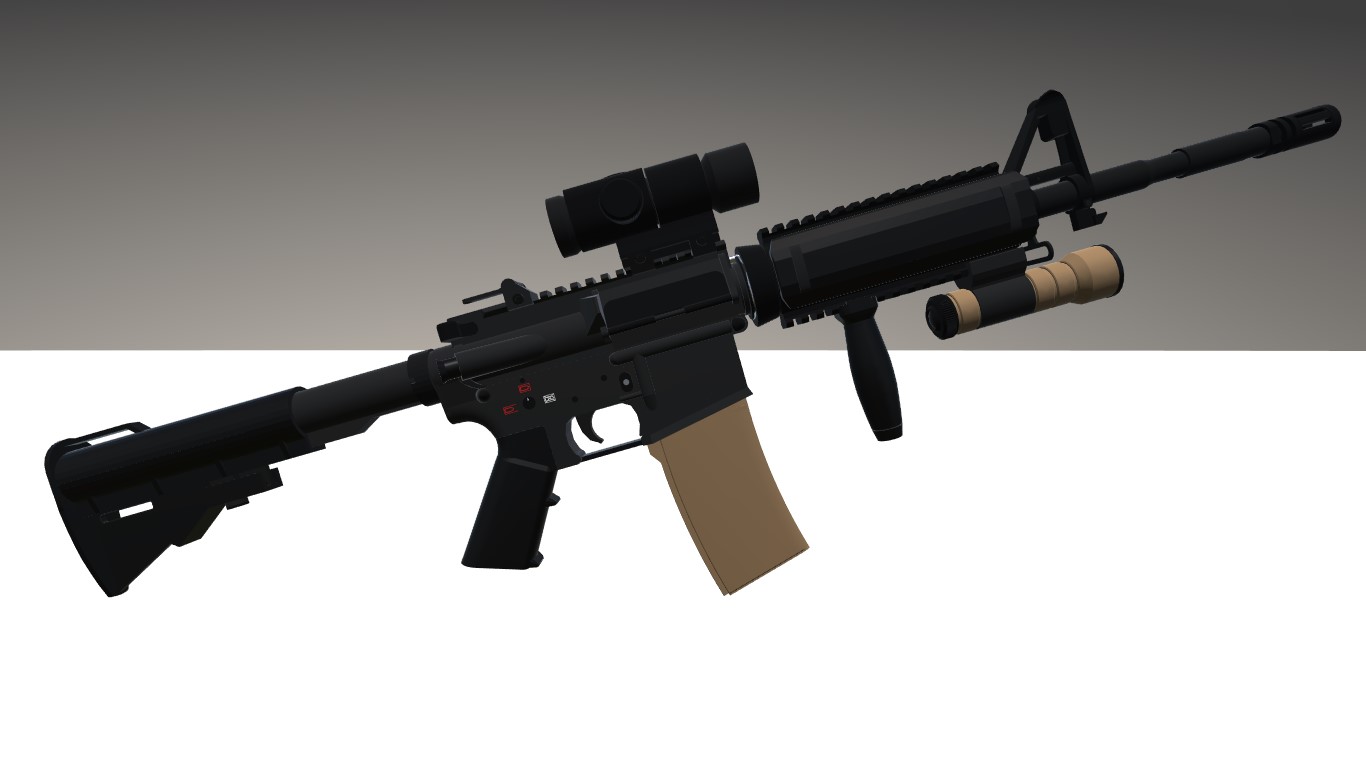
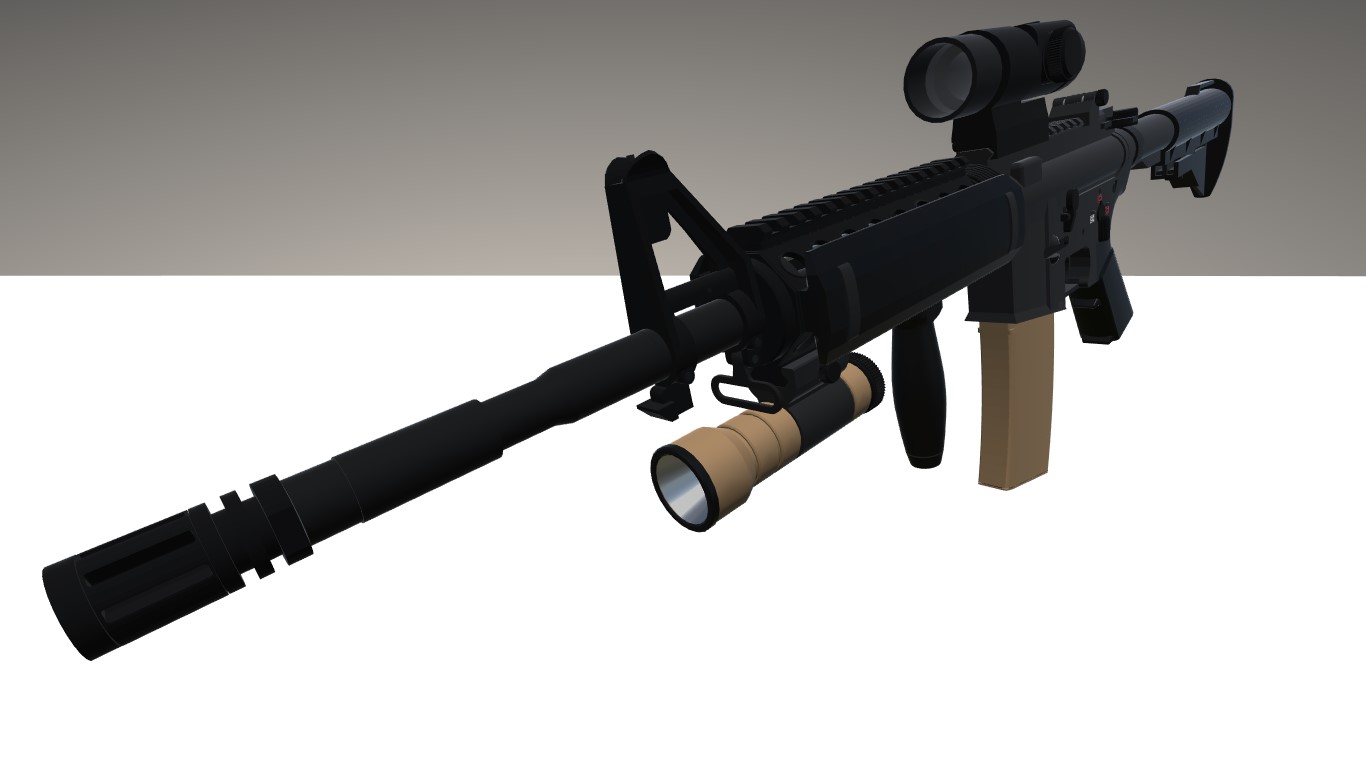
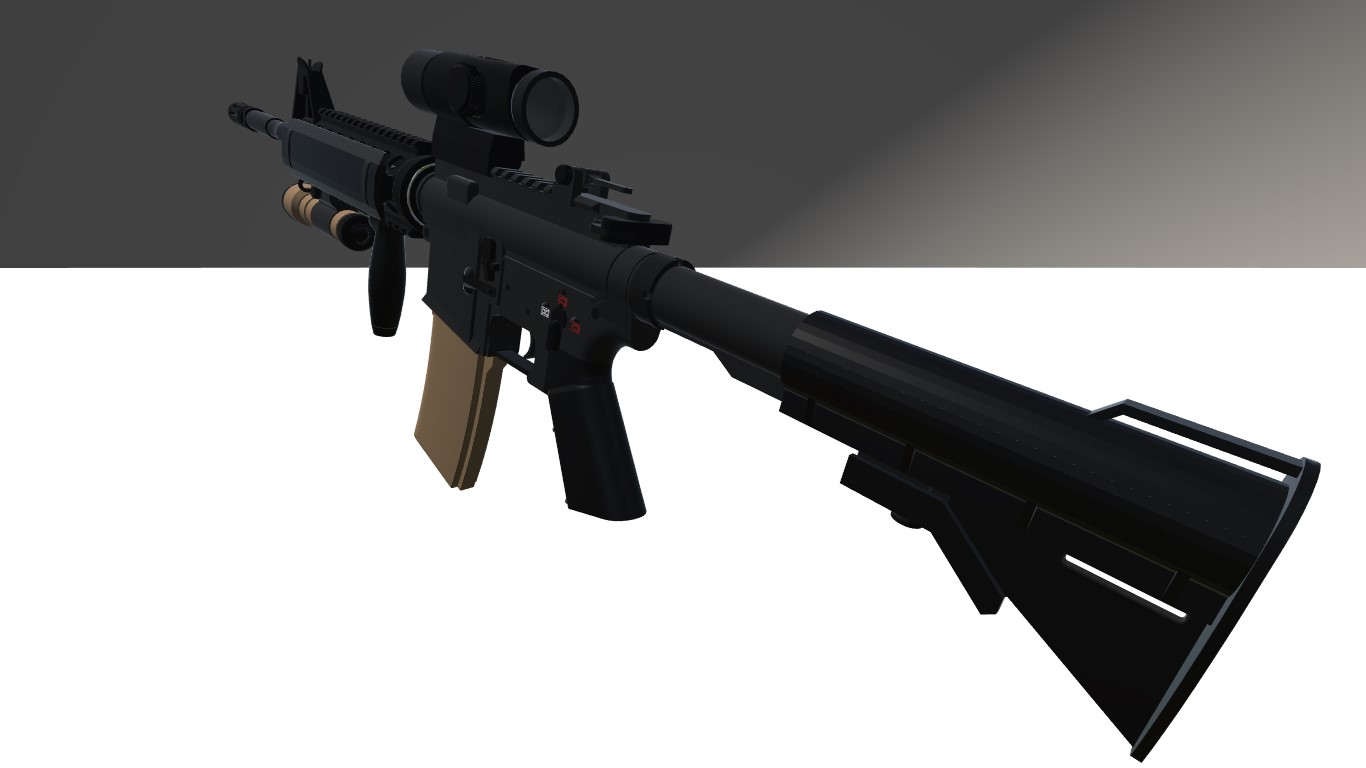
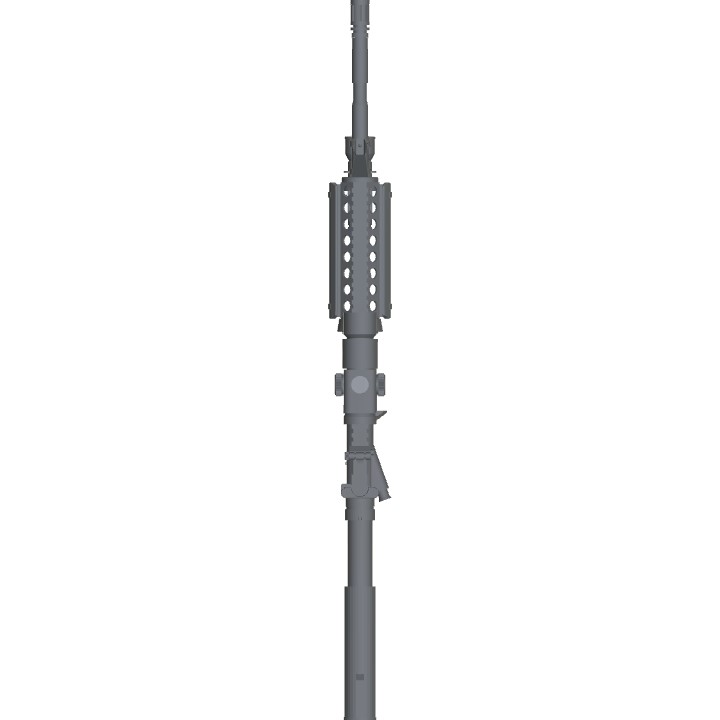
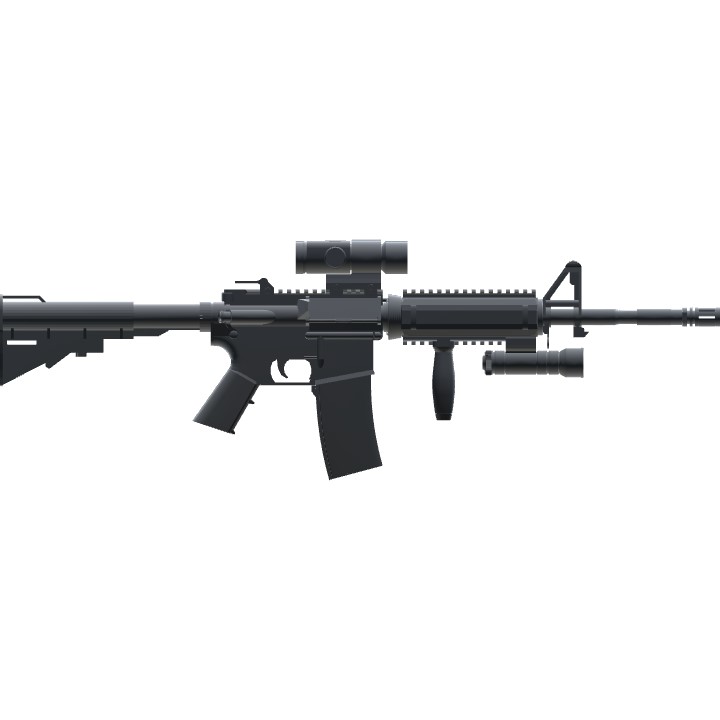
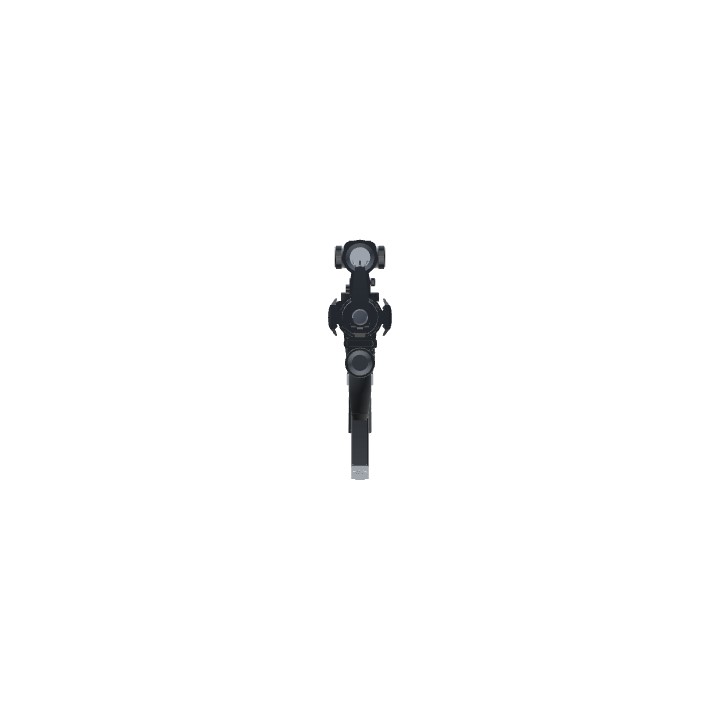
I would prefer modding your rifles over @YuukaNeko's.
600th Download!
Showed this to my friends in school!!1!!11
How to use it?
It’s worth a read. @LittleTOADY
i cant be the only one who just skipped the entire description
@Swiss777HD
Kalash better lol
Charles here. I just wanna say if you hate the M4, I will personaly fly to your house and take you to a government complex. AND I WILL CRASH INTO YOU TO.
Man wrote an essay
Mahusay! Nasa front page ka na!
you should be a mod
The description looks like an additional information in wikipedia when you open all of them lol.
Also I can't play it,its 1600+ parts ; -;
@Pilotmario
I was just thinking of Escape From Tarkov meme...
Due to wide customization of guns you can, well, bring, say, a dozen of flashlights, holo-sights and much more on M4 or AKM
@Grob0s0VBRa Does the muzzle flash count as a flashlight for you?
Not Enough Flashlights!
yet, good book and build
Thanks. @PapaKernels
upload
sorry, is my bad, i didnt see it.
@Pilotmario i dont think so.
Holy crap you wrote a book! Awesome m4 BTW.
This one doesn’t have glass? @smolensk
may i post one with glass added? ill give you full credit.
Heroic!
Uhhhhh the whole wikipedia is there xD
Baby Armalite? You going Filipino now, Roof Filipino?